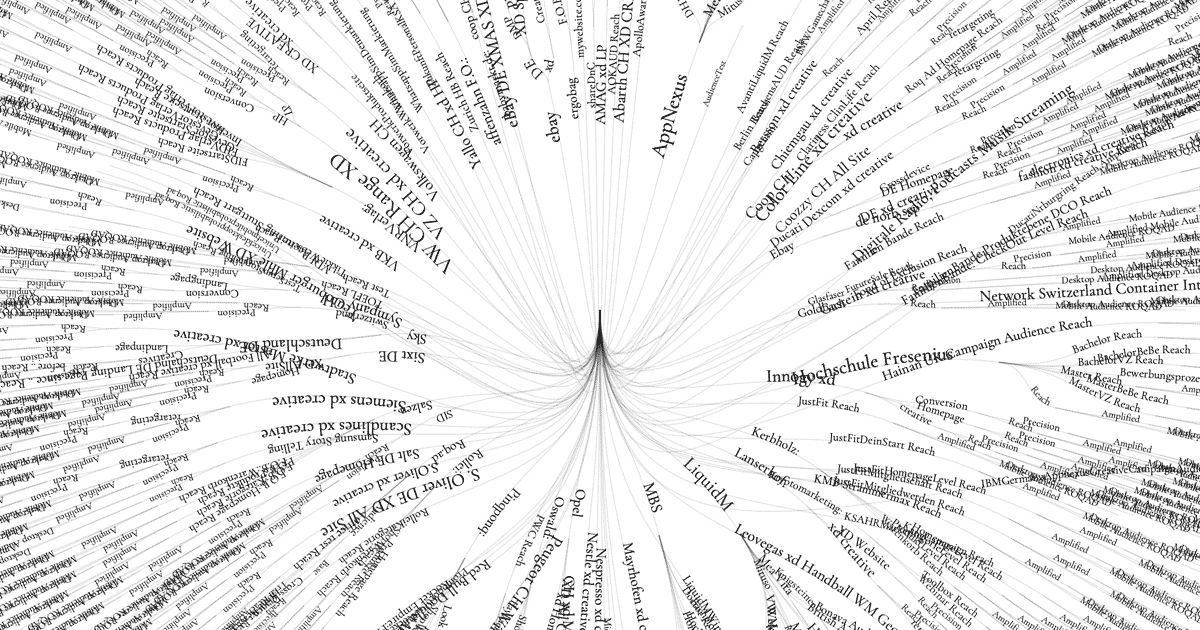
project
10/03/2024 – ongoing
Online
Data Brokers, Broken Data
Whenever you browse the internet, you are being tracked, categorized, and sold to the highest bidder. This project visualizes the segments into which data brokers divide us.
Data brokers collect and sell digital information about individuals. While they operate using personal information, their actions remain largely obscured and unknown to those affected. One of the most important marketplaces in this $740 billion industry is run by Xandr, the advertising and analytics subsidiary of Microsoft. Xandr provides a platform for buying and selling consumer-centric digital advertising and acts as a central hub for data broker activity.1
This project renders visible 90 data broker companies and the segments they use to classify individuals – more than 650,000 categories in total. Each diagram maps one company and the segmentation logic it employs. These graphics are tools for observing the observers—for looking back, and making the invisible visible.
At the same time, they expose the limits of representation. In some cases, the categories are legible, the hierarchy clear. In others, the segmentation is so excessive that the visuals collapse into opaque black masses. Rather than aiming for maximum readability, the graphics foreground the sheer absurdity of reducing individuals to endless slices of inferred traits.
The data was sourced from a now-unlinked page on xandr.com titled “Data Marketplace – Buyer Overview” (June 9, 2022), which remains accessible via archive.org.2 This information appears to have been published unintentionally and can be understood as an internal leak. As Netzpolitik.org argues, the segmentation practices revealed are not compliant with European data protection law.3
Data Brokers, Broken Data is a project by design researcher Kim Albrecht and part of a larger intiative by metaLAB (at) Harvard & Berlin to investigate the aesthetics of leaked data.